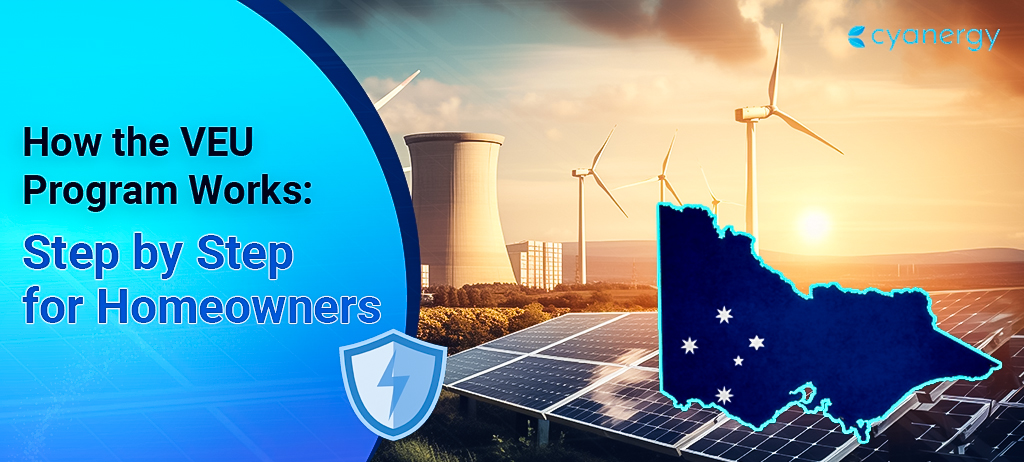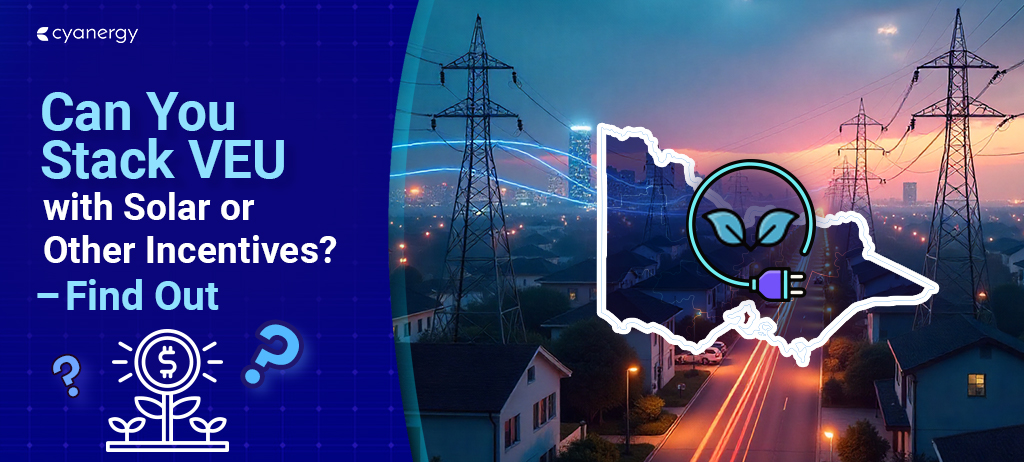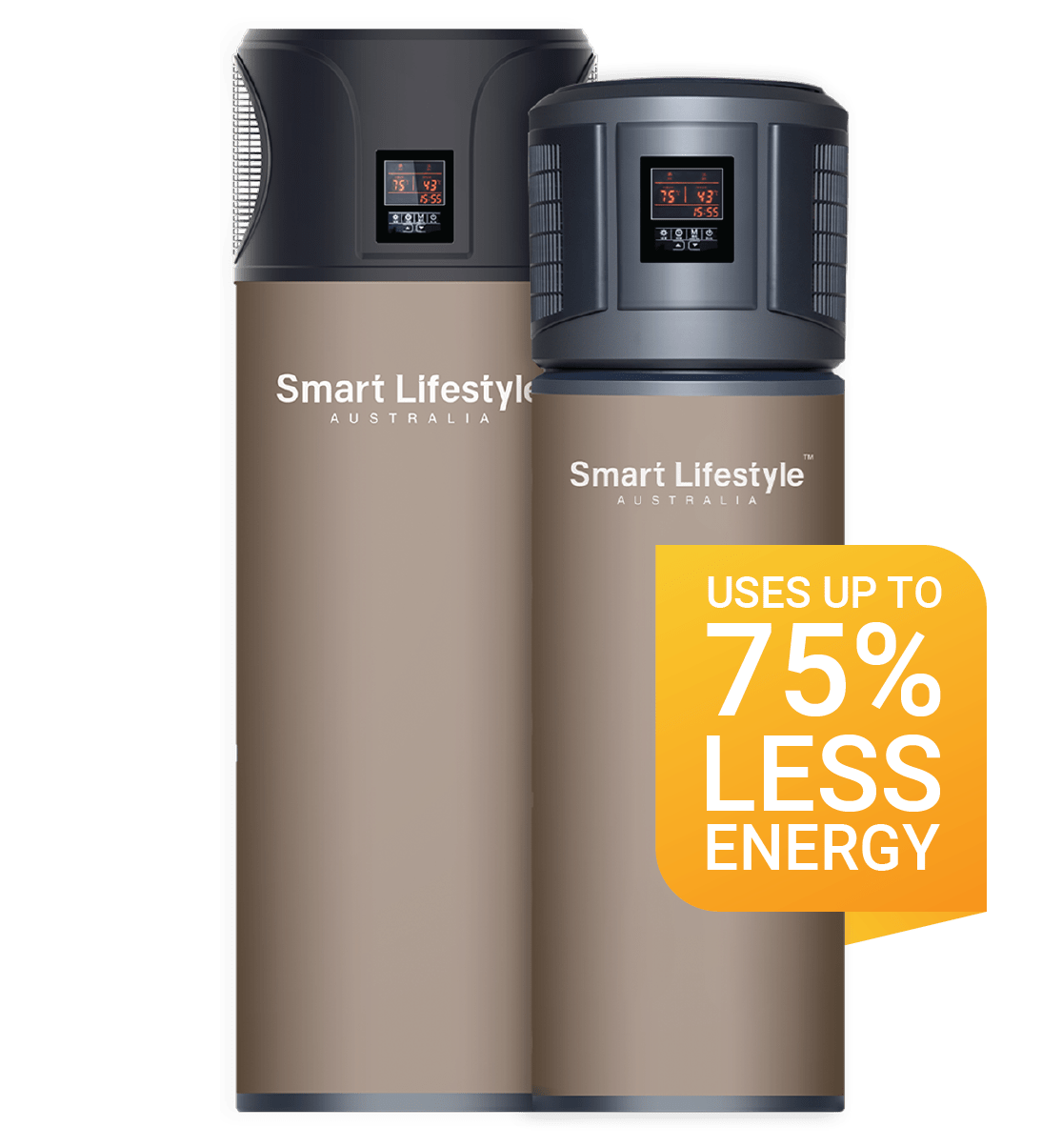In recent years, most Australians have been intensively focusing on electrifying their homes and embracing solar power as a reliable, clean source of energy.
But that’s not where it ends!
With abundant sunshine and a strong commitment to sustainability, nowadays residents are increasingly turning to solar-powered electric vehicles as a natural extension of this green movement.
These innovative electric cars harness the sun’s energy to reduce reliance on fossil fuels, lower carbon emissions, and offer greater energy independence.
With that essence, as solar technology continues to advance and EV options expand rapidly, Australia is well on its way to becoming a global leader in sustainable transportation.
So, are you ready to explore the best solar-powered electric cars lighting up Australia’s roads? Let’s dive in!
In this blog post:
- The Rise of Solar Energy and Electric Vehicles in Australia
- Australia’s Electric Car Statistics: How Many Are Being Sold?
- Top 5 Benefits of Solar-Powered EVs: A Real Game Changer
- Best Solar Powered Electric Cars in Australia| Go Green!
- Some Other Notable EVs in Australia in 2025
- Australian Government Rebates on Electric Cars: Claim Now in 2025!
- Solar Power and EVs: A Perfect Pair for a Sustainable Future
- Australia’s Transition to Solar Power and EVs: What The Future Holds?
The Rise of Solar Energy and Electric Vehicles in Australia
Australia was already working toward its national Renewable Energy Target, aiming for 82% of its electricity to be generated from renewable sources by 2035.
Adding to that, the growing adoption of electric vehicles (EVs) marks another significant step toward this clean energy goal.
Previously in Australia, the transportation sector was responsible for approximately 19% of total greenhouse gas emissions annually. But now it is even possible to have zero net emissions from electricity and vehicles. But how?
Well, by simply transitioning to EVs powered by solar, wind, and other clean energy sources, Australia is not only reducing its carbon footprint and minimizing dependency on fossil fuels but also taking meaningful action against climate change.
Overall, with solar energy and EV adoption continuing to rise, the nation is steadily moving toward a cleaner, more sustainable future.
Australia’s Electric Car Statistics: How Many Are Being Sold?
If you ever look at the recent scenarios, nearly 1 in 10 new cars in Australia are electric. According to data from the Electric Vehicle Council in 2024, over 114,000 EVs were sold, among which 91,000 were battery-electric vehicles (BEVs) and 23,000 were plug-in hybrid electric vehicles (PHEVs).
Altogether, these accounted for 9.65% of all new car sales in the country, an apparent increase from 8.45% in 2023.
The rise in EV adoption has been fuelled by the arrival of more affordable models from brands such as BYD, GWM, and MG, as well as government support through the Electric Car Discount Policy.
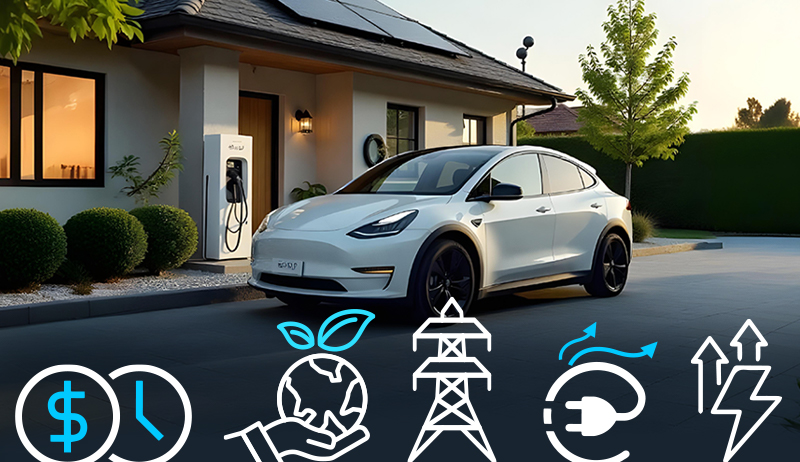
Top 5 Benefits of Solar-Powered EVs: A Real Game Changer
Combining solar power with electric vehicles isn’t just smart, it’s a fast and effective method for decarbonizing the Australian transportation sector.
Whether you’re cutting energy bills, shrinking your carbon footprint, or powering your home from your car, this clean energy duo is transforming the way Australians move and live.
So, let’s have a glance at all the advantages of solar-powered electric cars:
1. Major Cost Savings and Faster Payback
-
- Solar-generated electricity during sunny hours can significantly reduce or even eliminate charging costs.
For instance, charging a 60 kWh battery from the grid costs around AU$15 to 18, whereas solar energy during the day is essentially free.
- They offer attractive payback periods in Australia. A typical 6.6 kW home solar installation may pay for itself in 4 to 6 years through combined energy and charging savings.
- These cars reduce energy bills, offering an average savings of $1,500 per year.
2. Environmental and Emissions Benefits
- Charging EVs using solar instead of fossil-fuel–powered grid electricity cuts greenhouse gas emissions.
- Aligning EV charging with solar power accelerates decarbonization goals and supports Australia’s renewable transition, pushing toward clean energy.
3. Energy Independence and Grid Support
- Charging with home‑generated solar energy and storing excess in batteries helps homeowners avoid variable electricity prices.
- EV charging remains possible during power outages if a home battery system is present.
- Reduced reliance on the grid:
- EVs can utilize the excess energy generated by solar panels, reducing pressure on the grid during evening peaks.0
- In many parts of Australia, industrial leaders are using EVs as mobile batteries. They charge during the day, discharging to homes or the grid later to lower household power costs.
4. Bi‑Directional Charging Evolving Business Opportunities
- Vehicle‑to‑home or grid (V2H/V2G)
Some EVs can send power back to your home or grid when needed, offering cost savings or even income.
- Upcoming Australian standards
New standards being implemented will make V2G systems viable in Australia soon, enabling EVs to act as batteries on wheels for homes and the grid.
5. Boost in Property Value & Smart Energy Integration
- Homes with solar-compatible EV charging systems are increasingly appealing to eco-conscious buyers, potentially enhancing property value.
- Smart charging solutions with advanced EV chargers and energy management systems can automatically prioritize solar energy, optimize charging times, and reduce costs.
Best Solar Powered Electric Cars in Australia| Go Green!
1. Aptera Solar Electric Vehicle (SEV)
Aptera Motors, a company based in the United States, has created a solar electric vehicle available for pre-order in Australia.
The Aptera SEV is a three-wheeled vehicle powered by solar energy and capable of plug-in charging. It has a solar array that produces up to 40 miles of range per day, and offers up to 1,000 miles total on a single battery charge.
Among the most aerodynamic EVs out there, the Aptera accelerates from 0–60 mph in around 3.5 seconds and supports multiple battery sizes ranging from 23 kWh to around 100 kWh.
2. Stella Solar Cars by Solar Team Eindhoven
Created by Solar Team Eindhoven (Netherlands), these solar family cars repeatedly won the Cruiser Class in Australia’s World Solar Challenge (2013–2019)
Stella was the world’s first road‑legal solar family car, combining practicality with innovation, even winning “Best Technology Development” at the 2015. Crunchies in San Francisco.
They intend to be energy-positive, producing more energy than they consume.
3. EVX Ventures’ Immortus
EVX Ventures, an Australian company, has created a prototype solar sports car called the Immortus.
Solar photovoltaic panelling covers the car’s body, allowing it to run entirely on solar power. While the Immortus is not yet commercially available, it represents a significant advancement in solar vehicle technology.
4. Sunswift’s Violet
Violet, developed by Sunswift, a team from the University of New South Wales, is a solar-electric car.
This vehicle competed in the Bridgestone World Solar Challenge and is designed for functionality and comfort, with four-person seating and an 800-kilometre range on a single charge.
All of the above electric vehicles represent Australia’s current state of solar vehicle technology. Additionally, Many more solar-powered cars will become commercially available soon as technology advances.
Some Other Notable EVs in Australia in 2025
Besides the solar-powered electric cars, there are some best electric cars in Australia like Tesla Model 3, Model Y, or BYD that are charged via external electricity sources.
So, here’s a closer look at some leading EVs in Australia:
Tesla Model Y
The Model Y consistently ranks as Australia’s top-selling electric vehicle. You can charge your Tesla with solar-generated electricity at home, but the car itself doesn’t have built-in solar panels.
- It offers a spacious interior and cargo area, making it a versatile choice for families.
- Boasts a competitive range on a single charge, with various models offering different battery options.
- With advanced technology features, Tesla has a renowned Autopilot system and over-the-air software updates.
Tesla Model 3
The Tesla Model 3 is a fully electric compact sedan produced by Tesla, Inc. It’s one of the best-selling EVs globally and is known for its performance, tech features, and relatively affordable entry price compared to other Tesla models.
- The Model 3 is known for its stylish and modern design.
- It’s considered a great value for money EV, offering a blend of performance and affordability.
- The Model 3 is known for its impressive efficiency and driving range.
- This technologically rich car features a minimalist interior with a large touchscreen interface and advanced technology.
BYD Dolphin
The BYD Dolphin is a popular choice for budget-conscious buyers, offering a competitive price point in the EV market.
- Despite its affordability, the Dolphin comes with a good array of features and technology.
- Its WLTP-rated range is about 427 km for the 60 kWh version
- Its compact size makes it well-suited for city driving and parking.
MG4
The MG4, also known as the MG4 EV, is a compact electric hatchback built on SAIC Motor’s Modular Scalable Platform (MSP).
This design enables dynamic styles and features while maintaining a balanced weight distribution for engaging drive quality.
- The MG4 is a strong contender in the competitive small car segment.
- It offers a good balance of price, features, and range.
- Supports up to 140 kW, allowing 10–80% charging in as fast as 26–35 minutes
- The MG4 has a stylish and modern design that appeals to a wide range of buyers.
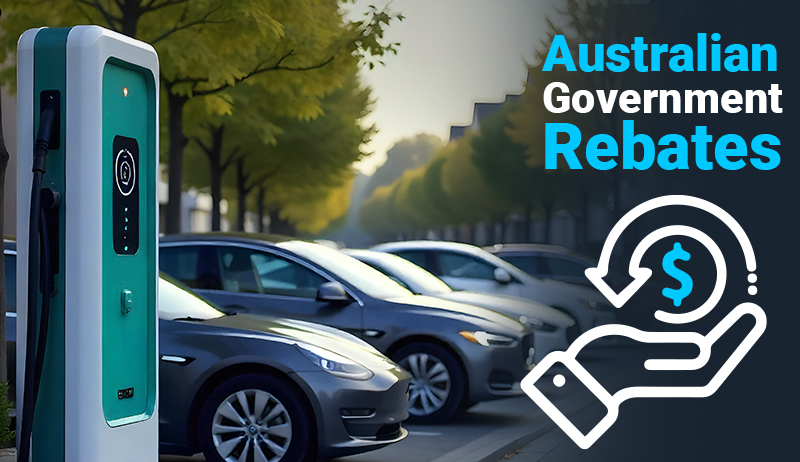
Australian Government Rebates on Electric Cars: Claim Now in 2025!
Government incentives for solar and EVs in Australia are now widely available, making the energy shift faster for Australian residents.
Let’s see what incentives are on the table in 2025 for Solar and EVs:
Federal Incentives for Electric Vehicle (EV) Incentives
- Electric Car Discount: Provides FBT exemption for eligible EVs/PHEVs, helping businesses and salary‑packaged users save thousands.
- New Vehicle Efficiency Standard (NVES): Started from 1 Jan 2025, encourages manufacturers to sell more efficient vehicles and removes customs duties below the luxury car tax threshold.
- CEFC (Clean Energy Finance Corporation) provides low‑cost green loans to facilitate EV purchases and clean energy upgrades.
- Support for Farmers and Low‑Income Buyers:
- $50 million in subsidized EV loans for farmers and truckers.
- $150 million program to help workers earning under $100,000 purchase EVs
- $50 million in subsidized EV loans for farmers and truckers.
State‑Based Incentives
- Queensland:
- Up to $6,000 rebate for EVs under $68,000 for households <$180,000 income.
- Reduced registration and stamp duty.
- New South Wales (NSW): They offered EV rebates and stamp duty exemptions.
- Victoria: No current rebate, but EV road user tax scrapped.
Solar Power and EVs: A Perfect Pair for a Sustainable Future
So, why are solar energy and electric vehicles (EVs) such a perfect match for Australia?
Simple! We’ve got abundant sun, vast open space, and a serious drive for sustainability. By combining solar power with EVs, you’re not just saving on fuel, you’re driving on sunshine.
Moreover, less pollution, lower costs, and energy independence are all at your fingertips. Isn’t that a smart move? Surely it is!
Let’s take it further and find out what this future could really look like in the next part.
Australia’s Transition to Solar Power and EVs: What The Future Holds?

Here’s a glimpse of what that future could look like:
Charging your from Home for Free
Imagine waking up every morning to a fully charged car, powered by the sun hitting your rooftop panels. No trips to the petrol station, no tension about the rising fuel costs, just clean, homegrown energy.
Solar-Powered EV Charging Stations
Across highways, rest stops, and shopping centres, solar-powered EV chargers can make long-distance travel greener and more convenient. Australia’s highways are the perfect place for a solar-charged transport network.
Boosting Regional and Remote Communities
Solar + EVs = energy freedom!
In remote communities where fuel is expensive and power can be unreliable, solar EVs offer a self-sufficient alternative. They are clean, quiet, and cost-effective.
Cleaner Cities, Healthier Lives
With more EVs on the road and more solar on rooftops, we cut emissions and air pollution. That means better health outcomes, fewer carbon emissions, and a quieter, cleaner environment for the future.
So what are you waiting for?
To power up your future, contact Cyanergy today and make the smart switch to solar! From top-tier solar solutions to expert EV charger installations, we’ve got your energy needs covered.
Get started with a FREE solar quote, unlock exclusive deals, and take the first step toward a greener, more sustainable tomorrow.
Let’s build a brighter future together with Cyanergy!


